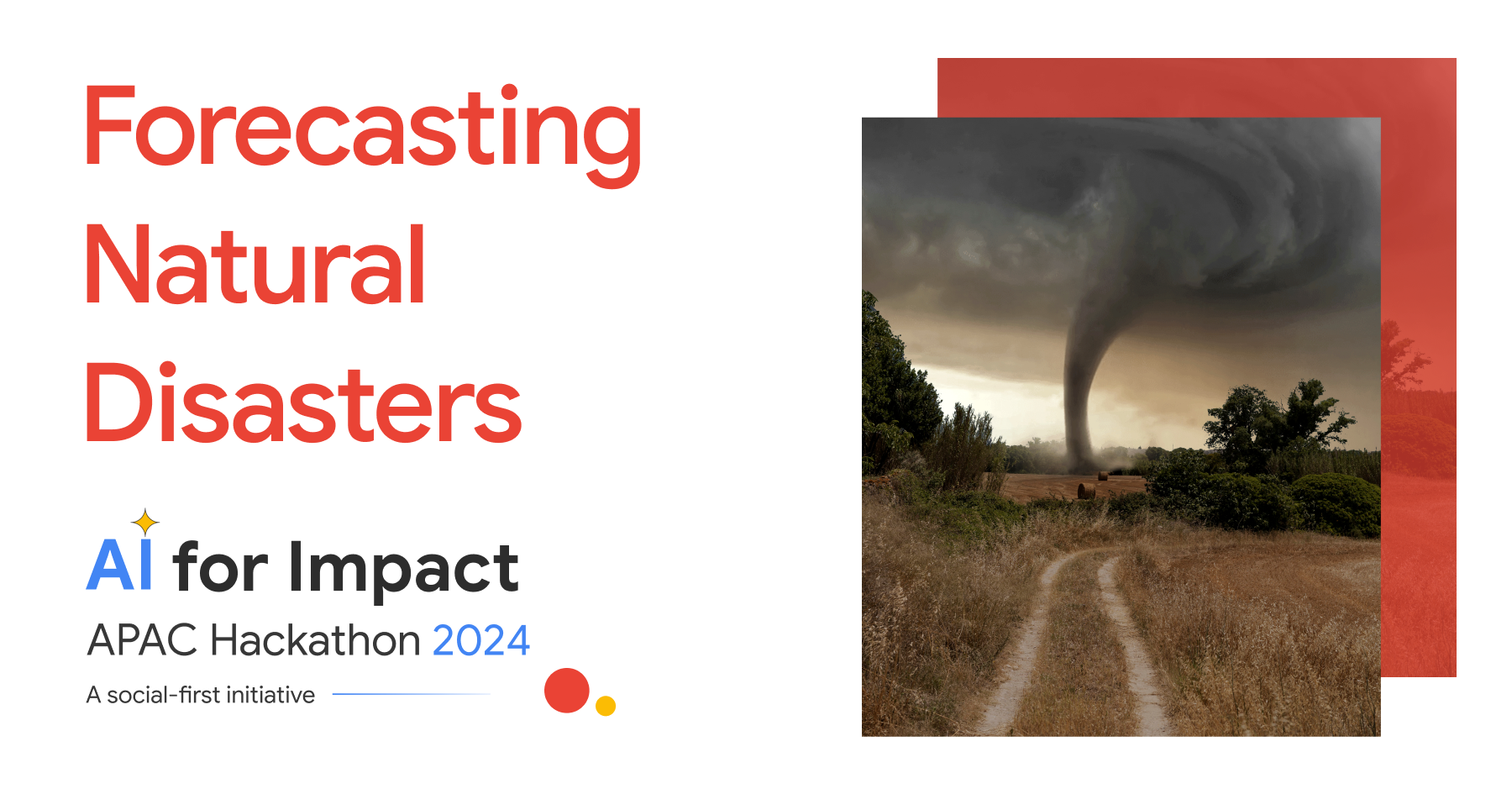Preparing for the Unpredictable: Using AI to Forecast Natural Disasters in the Asia-Pacific Region
 Krusnansh Gupta
Krusnansh Gupta
The Asia-Pacific region is increasingly vulnerable to natural disasters, with threats from earthquakes, floods, typhoons, and droughts intensifying every year. According to recent data from Vision of Humanity, Asia-Pacific is the world’s most disaster-prone area, accounting for nearly half of all natural disasters globally over the past 30 years. Between 1990 and 2020, this region experienced a staggering rise in disaster occurrences, severely impacting millions of lives and causing extensive economic damage.
Don’t miss your chance to make a difference — register here: https://bit.ly/3NTkBEE
Key Challenges in Natural Disaster Preparedness and Response
High Frequency of Disasters: The region faces frequent and varied natural disasters. Countries in APAC bear the brunt of more than 40% of the world’s natural disasters, which include catastrophic events like earthquakes, typhoons, and landslides, each with the potential to displace millions and disrupt vital infrastructure.
Data Gaps and Prediction Limitations: Limited and inconsistent data on geological and climate-related factors hinder the development of accurate predictive models. Many countries lack the infrastructure to monitor or store data on a scale that would enable reliable forecasting, especially in remote and high-risk areas.
Water Scarcity and Increased Flood Risk: Rising water scarcity, combined with intensified flooding, has become a critical issue in the Asia-Pacific. Water stress levels are projected to increase, exacerbating competition over water resources and heightening the risk of regional conflicts, especially during droughts or monsoon failures.
Take the first step towards Solving these challenges by registering now

Leveraging AI for Disaster Prediction and Mitigation
The AI for Impact Hackathon offers participants the opportunity to build AI-powered solutions that could transform how the Asia-Pacific prepares for and responds to natural disasters. Participants can make a meaningful impact by developing solutions such as:
AI-Powered Early Warning Systems: Using AI models trained on historical and real-time data, early warning systems can help anticipate severe weather patterns, giving communities valuable time to evacuate or secure resources.
Resource Allocation Models: AI can help map resource needs and optimize distribution to areas most likely to experience disasters, ensuring timely aid and minimizing economic loss.
Flood and Drought Forecasting Tools: Predictive analytics for floods and droughts can help policymakers and local organizations plan for potential water scarcity and allocate resources to mitigate the effects.
Take Action: Join the Hackathon to Drive Real Change
Join the AI for Impact Hackathon and compete for:
Cash Prizes: $20,000 up for grabs
Hands-On AI Workshops: Learn directly from Google’s AI experts
Professional Mentorship: Guidance from the Google for Startups team
Exclusive GCP Credits: Special Google Cloud credits for top teams
VIP Event Passes: Access to select Google events

Register here to know more: https://bit.ly/3NTkBEE
References
Subscribe to my newsletter
Read articles from Krusnansh Gupta directly inside your inbox. Subscribe to the newsletter, and don't miss out.
Written by
